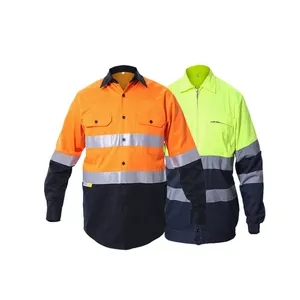Staff uniforms can have a significant influence on employee behavior and attitudes within the workplace. Here’s how uniforms can shape employee behavior:
1. Professionalism and Pride:
- Wearing uniforms can instill a sense of pride and professionalism among employees. Uniforms create a clear distinction between work attire and personal clothing, encouraging employees to adopt a more focused and professional mindset.
2. Team Cohesion:
- Uniforms create a sense of unity and belonging among employees. When everyone wears the same attire, it reinforces the idea that they are part of a team with shared goals and responsibilities.
3. Customer Service:
- Uniforms help employees project a consistent and professional image to customers. Employees are more likely to maintain a positive and helpful demeanor when they are dressed in a uniform that represents the company’s brand.
4. Accountability:
- Uniforms make employees easily identifiable, fostering a sense of accountability for their actions. Knowing that they are representing the company can encourage employees to behave responsibly and ethically.
5. Role Clarity:
- Uniforms can differentiate between different roles or hierarchies within the organization. This differentiation helps employees and customers identify who holds particular positions and responsibilities.
6. Reduction of Distractions:
- Wearing uniforms eliminates the need for employees to decide what to wear each day. This reduction in decision-making can help employees focus more on their tasks and responsibilities.
7. Professionalism in Interactions:
- Uniforms influence employees to adopt a professional demeanor, even in challenging or informal interactions. This can lead to more consistent customer service experiences.
8. Organizational Identity:
- Uniforms reinforce a sense of identity with the organization. Employees are more likely to align with the company’s values and mission when they are dressed in a way that visually represents those values.
9. Confidence and Self-Perception:
- Employees may feel a boost in confidence when wearing uniforms, as they are part of a recognizable and respected group. This confidence can influence their behavior and interactions with colleagues and customers.
10. Compliance with Standards:
- Uniforms can encourage adherence to workplace rules and standards. Employees are more likely to follow guidelines and protocols when they are dressed in a uniform that symbolizes adherence to company policies.
11. Equal Treatment:
- Uniforms create an environment where employees are judged based on their performance and behavior rather than their clothing choices. This promotes a fair and inclusive workplace.
It’s important to note that while uniforms can have positive effects on behavior, they are not a one-size-fits-all solution. The design, comfort, and appropriateness of uniforms play a crucial role in influencing employee attitudes and behavior. Organizations should consider involving employees in the uniform design process and regularly seeking feedback to ensure that uniforms are contributing to a positive work environment.

































